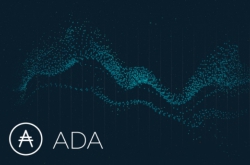Cryptocurrency enthusiasts today are given several entry points to this dynamic and promising, market: you can simply make an investment and sit on it; mine it, trade it on exchanges or invest into trust funds.
New exchanges and funds appear nearly every day. In 2017, according to research by Autonomous Next, 84 cryptocurrency hedge funds were launched – a major improvement compared to the 11 launched the year prior. Aside from the major exchanges like Bitfinex (Hong Kong) or Bittrex (USA), a multitude of smaller ones are being created. The number of users is growing, too: a mass influx of users late last year even forced Bitfinex and Bittrex to close the registration of new accounts. Representatives of the exchanges explained that they had to upgrade the infrastructure that couldn’t handle the number of registration and verification requests.

The basic principles of trading on the cryptocurrency and stock markets are similar (buy for less – sell for more). Nevertheless, the cryptomarket is much more volatile, which opens up more opportunities for quick profit. At the same time, the likelihood of losing one’s investments is much bigger, too. This is especially relevant for players new to the market, who have to learn the rules and laws of a complicated system in a short period of time.
This was Alexandr Romanov’s situation, too. His first experience trading on a cryptocurrency exchange was a failure due to a lack of experience and knowledge of the market. It was then that the student realized: users need a tool to help them learn about the market in no time and start making a profit off cryptocurrency.
Cryptopus
This idea gave birth to the Cryptopus project – a blockchain brokerage marketplace.

“We came up with this platform when we realized that people aren’t keen on figuring out complex systems. It’s easy to visit an online marketplace and find what you’re looking for. This is how our platform functions: customers use it to find a trader they’re interested in and interact with that trader only,” – explains Alexandr Romanov, CEO of Cryptopus and student at ITMO University.
The platform has two basic categories of users: investors, who join the market and gain profit from letting professionals trade for them, and brokers, who are traders with a personal cryptocurrency portfolio. Cryptopus aims to provide investors with a place to establish reliable relationships with professional traders in a system where parties can trust each other.
How it works
First, traders sign up to the platform and upload their prior trading history. The system gives it an assessment and places the trader onto a rating board. The higher a trader’s rating is, the more likely they are to be put on the list of reliable traders. Developers note that they relied on the experience of specialists working on the more conservative stock market who deal with pattern analysis in trading. Using that knowledge, Cryptopus’s developers are building a system which would analyze the traders’ trading patterns on the cryptomarket.

For the next stage, investors sign up to the platform and use trader ratings to choose someone to work with. In addition to the rating, investors can learn about potential partners’ history and track their activities in real-time. Investments are made with ETH currency and are insured with CPP (Cryptopus) tokens.
Once a client has picked a trader and decided to invest, the two parties’ agreement is sealed with smart contracts, which aim to prevent all types of fraud.
“Since we’re using an open API, a separate wallet is registered for each single interaction, and traders are unable to withdraw funds off of them. Therefore, they can use that money to trade, but they can’t move it anywhere outside the exchange, preventing them from basically running off with the money,” – notes Romanov.
The rating system is also helpful as it encourages traders to be responsible: their rating, in essence, determines whether or not they’ll be able to find new clients. If a trader doesn’t perform well, their rating decreases – and since the system is based on Ethereum blockchain, they won’t be able to rejoin with the same data and will have to build their reputation from the ground up.

“The idea of trader management isn’t new; it’s existed for a while and is actively used abroad. It is new, however, to the cryptocommunity. There are similar projects right now that simply copy deals, but in those systems traders don’t feel responsible for the funds that are traded according to their example. For example, say they invest $1000 and lose it – so would the people who copied their deal. Everyone’s upset and the service loses customers. We, however, can avoid this kind of negligence,” – says Alexandr Grebenko, CBDO of Cryptopus and a student at ITMO University.
As for the traders, the blockchain marketplace, by way of attracting additional clients, gives them an opportunity to receive more investments and expand their portfolios. Using this opportunity and “balancing out” through the different cryptocurrencies in their portfolio, they may become less dependent on situations where, for example, major players start destabilizing a particular currency. Cryptopus’s developers themselves plan to make money off traders; the service will only make a profit if the trader has made a profit for their investor. If there is no return on investment, no fees are retained.

As of now, the system is in a closed beta; developers plan to open access to all users in mid-February. In December, they launched a pre-ICO that closed on January 31 with more than $30,000.
The team
Right now, the project’s team includes eleven people. Besides the two ITMO students (Alexandr Grebenko studies at the Information Technologies and Programming Faculty, and Alexandr Romanov – at the Faculty of Software Engineering and Computer Systems), the platform is being developed by specialists from Austria, the US, and Bulgaria. As Alexandr Romanov says, the team is still growing; a developer community exists on GitHub, with some of them already working on the project and its pre-ICO.
Future plans
Cryptopus is currently connected to the four biggest cryptocurrency exchanges – Kraken, Bitfinex, Poloniex and Bittrex. In the future, developers plan to expand this list and involve smaller exchanges from all over the world.
On February 26, the team will launch an ICO that will end in April. Before that, the developers aim to finish their project and present a finished product to their users. The ICO will serve as a foundation for the project’s own reserve fund.

“The mechanics are quite simple. Seeing as we work with people on both sides, we can’t avoid the human factor. In the event that a trader turns out to be unreliable and loses their investment, we can help the investors by reimbursing them from our reserve fund. After all, if there is no way to let investors keep their money, they are likely to quit the market. For our part, we want to ensure their safety and let them keep their investment,” – says Alexandr Romanov.
The project’s source code is fully available on GitHub. You can follow the project’s development on its website, as well as learn more about it and see its roadmap in the project’s white paper.





